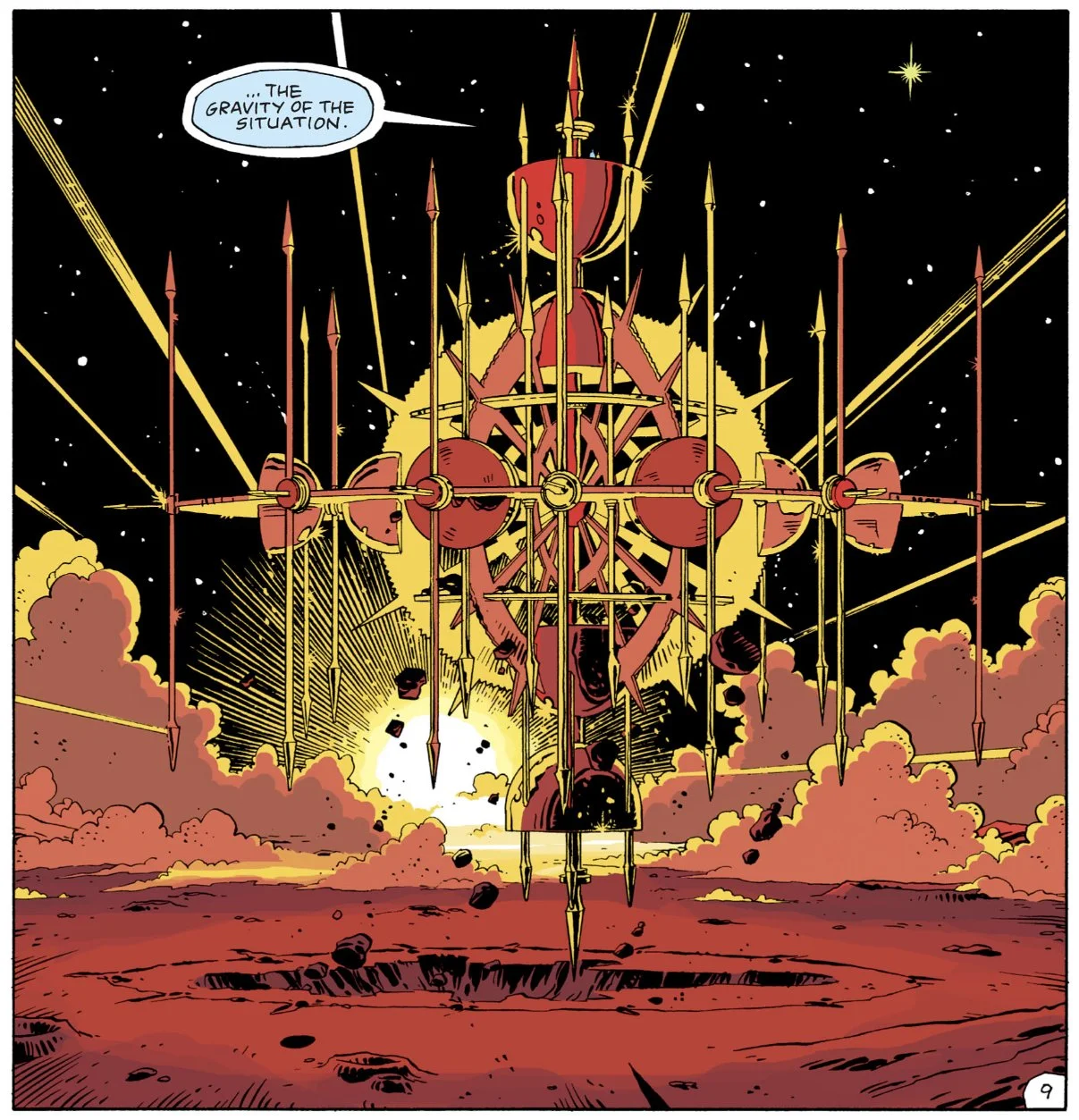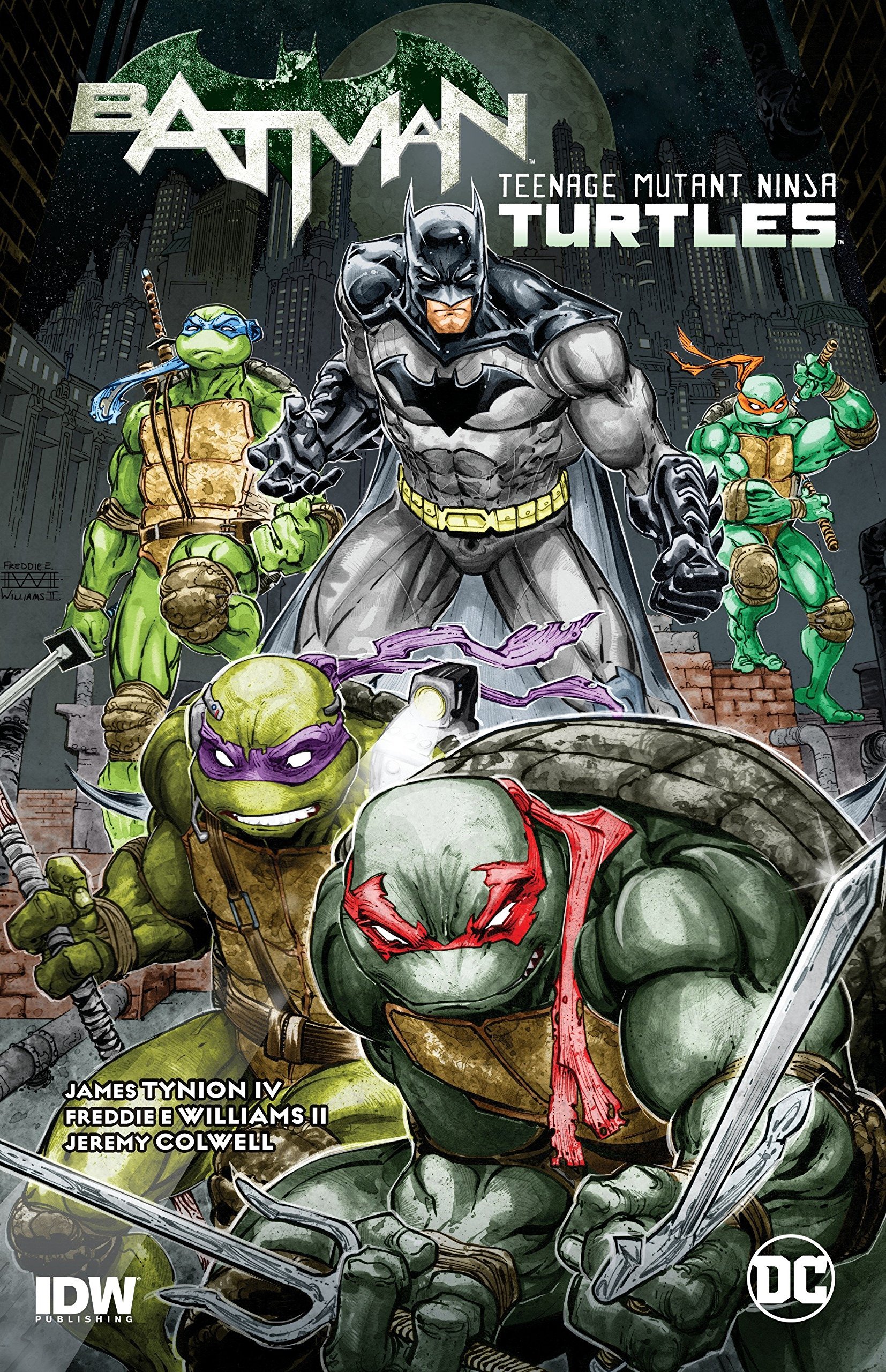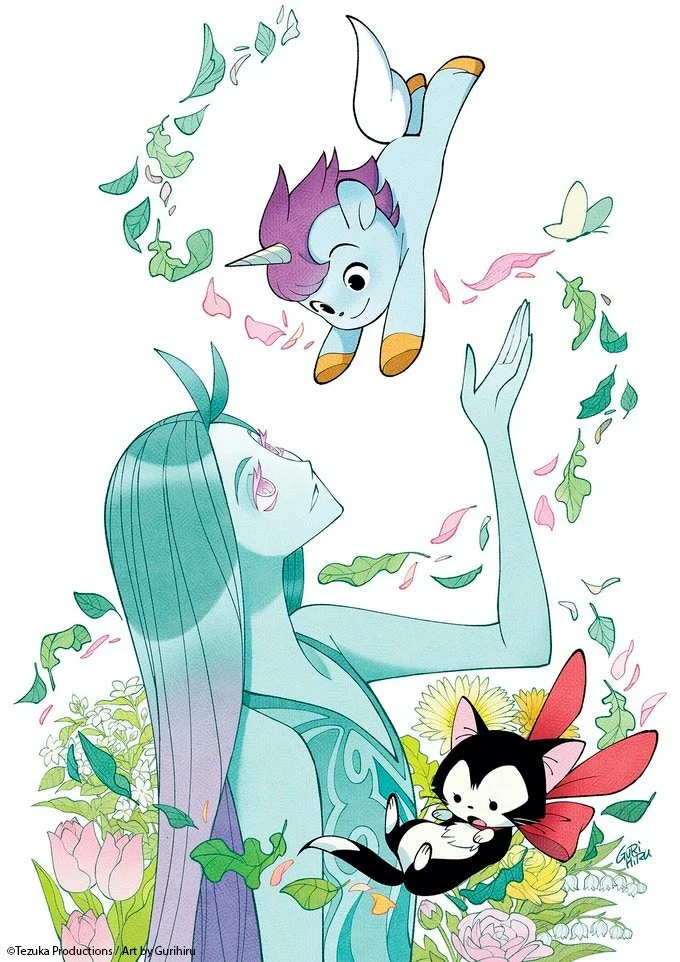The Man Without Fear...By The Year: 1984
By Bruno Savill De Jong — It’s 1984. Indira Gandhi is assassinated, the charity supergroup Band Aid forms for Ethiopian famine relief, and the Macintosh PC goes on sale. People are listening to “Take On Me,” watching Ghostbusters and reading Daredevil.
Towards the end of 1984, the charity supergroup “Band Aid” was formed, collecting some of the UK’s biggest pop-stars to raise funds against the famine ravaging Ethiopia. The resulting track “Do They Know It’s Christmas?” became one of the best-selling singles of all time, raking in enormous success and several imitators. But aside from being a very boring song, Band Aid gathered criticism for its self-righteous and condescending attitude towards the African continent.
Written by Dennis O’Neil (202, 204-207, 210-214), Steven Grant (203), Harlan Ellison (208) Arthur Byron Cover (208-209)
Illustrated by William Johnson (202, 205, 207), Geof Isherwood (203), Luke McDonnell (204), David Mazzuchelli (206, 208-214)
Inks by Danny Bulanadi (202-213), Mel Candido (207), Pat Redding (212), David Mazzuchelli (214)
Colors by Glynis Wein (202), George Roussos (203, 205, 211), Bob Sharen (204, 213), Christie Scheele (206, 208-210, 212, 214), Julianna Ferriter (207)
Lettered by Joe Rosen (202, 204-214), Jim Novak (203)
In 1984, Matt Murdock and Foggy Nelson also encounter visitors from Africa. A group of English colonists were lost in Eastern Africa in the 18th century, their descendants regressing into the “savage” Kinjorge Tribe (a bastardisation of “King George”). Such noble savages, led by the ruthless Chief Micah, were recently “discovered” and are now touring America, being represented by Nelson & Murdock. They even have time to celebrate Christmas. Although not without some novelty, what ensues is possible the worst year of Daredevil so far.
This Chief Micah storyline dominates the entirety of 1984, stretching from Daredevil #202 to #214. Such “noble savage” storylines are already rife with queasy stereotypes and hokey binaries, even this mid-80s story feeling outdated with how the fish-out-of-water tribe react to the “modern world.” It repeatedly contrasts the “African jungle” against the “urban West” but rarely develops into anything deeper than the Kinjorge’s confusion over table manners. Daredevil at least reverses the racial element, with the Kinjorge being uniformly white while their anthropologist “escort,” Professor Piper, is black – although the “devolution” of these English colonists also reads uncomfortably.
Moreover, Daredevil did an incredibly similar storyline with the “white savage” Ka-Zar and his brother The Plunderer (mirrored by Micah’s ancestral relative Lord Barrington Synn). Those issues at least had the excuse of Silver Age silliness and of brevity. Having passed the Rubicon of Frank Miller, Daredevil’s 1984 feels rote and draining.
As the Kinjorge plot is spread over 13 issues, the question becomes what the point of it all is. Perhaps it is contrasting Daredevil’s complex modern life with Micah’s cruel simplicity. When one of his multiple wives beelines to a food vendor, she is hit by a car and dies, and Micah appears unphased (and perhaps even amused) by this. The implication being that survival is the law of the jungle, and his bred savagery (and maybe innate evil) makes him crave domination and despise the weak. This is also seen by how the Kinjorge relentlessly mock both blind Matt Murdock and paraplegic Becky Blake, dumbfounded and bemused by the existence of disabled people in this brave new world.
But somewhere along the lines the story shifts to being about the corrupting influence of Western civilisation. Chief Micah can barely speak English when he first arrives, but ends up insisting his tribe speak “English correctly.” Micah poses as a noble savage, but becomes increasingly savvy at manipulating the media against Daredevil, privately monologuing that the West’s great invention is “not the television… the electricity… the airplanes and the cars. It is the lie! The wonderful lie! In the jungle there was no lie. We were hungry… in the danger… only truth was possible.”
It appears that robbed of the jungle’s primality, Micah has been consumed by the West’s superficiality and excess. He gluttonously consumes vices like cigarettes, drinks, popsicles, drumsticks and ice cream. Bizarrely, this African tribe also becomes greedily determined to take over the criminal underworld, putting them in conflict with the Kingpin, with whom Daredevil teams up to stop the Kinjorge.
An alliance with Kingpin could make this worthwhile reading, although it isn’t like this hasn’t happened before – Daredevil and Kingpin have always held an uneasy truce – and it's ultimately futile since the Kinjorge are their own undoing. Really, it's remarkable the Micah threat goes on for so long, as he is clearly homicidal from the start, but Daredevil cannot bring him in “without proper evidence” (notwithstanding the cop he threw out a window). Indeed, Daredevil is apparently held back by Micah filing a “restraining order” against him, despite Daredevil also bending the rules by collaborating with the criminal Kingpin. Matt’s conflict with Micah is simply repetitive and dull, putting up new obstacles to prevent it from ending.
Yet the worst thing is what 1984’s Daredevil does to poor Debbie Harris, wife of Foggy Nelson. Debbie was first introduced way back in 1965’s “While the City Sleeps!” (Daredevil #10) as an old flame of Foggy’s who helped the Organizer rig the mayoral election. But she later reformed and became close to Foggy, getting engaged to him – throughout a lengthy kidnapping by the Purple Man – before finally getting married in “Till Death do us Part” (Daredevil #166). Debbie rarely has the best characterization, often being left off-panel and forgotten in the background.
Dennis O’Neil gives Debbie a prominent role, but also turns her into a shrewd, vain, elitist and conniving women who sneers at homeless people, demands Foggy minimize Matt’s role in their firm and blackmail him into covering up Chief Micah’s crimes, since Debbie has grown “bored” of Foggy and prefers the exciting Chief Micah instead. Matt repeatedly thinks to himself “I actually helped [Foggy] marry that woman,” but this incredulity is warranted, since this Debbie is a completely different person.
O’Neil frames Debbie as a horrible hen-pecking wife, who foolishly wants to “dress up” and indoctrinate the ravishing new chieftain into high-society. There is also a taboo lust around Micah – female pedestrians’ comment “he can brutalize me any old time he wants” – and him aggressively pulling Debbie into an embrace somehow only exacerbates her affections. Instead of reviling this sexual assault, Debbie seems to enjoy it. Debbi even demands Foggy discredit Matt and Becky’s testimony against Micah, or else she’ll leave him, which she promptly does anyway. Micah subsequently humiliates and debases Debbie, forcing her to be his slave that he doesn’t talk to, making Debbie need to escape and crawl back to Foggy to beg his forgiveness. The entire portrayal is icky, reading like caricaturing and punishing an unsatisfied wife.
The Kinjorge storyline is only further extended by being staggered throughout 1984, every other issue interrupted by standalone stories. These instalments are fairly disposable, but add flavor to Matt’s backstory, like when he’s asked to represent an old childhood bully who made his life miserable. Matt accepts him as a client, with the apparent intention of mishandling the trial to get him the maximum penalty, a coldly calculating “revenge” that Matt almost seems subconscious of until Foggy snaps him out of it. Matt also meets a childhood friend “Johnny Squarejohn” who has fallen on hard times, thanks to Daredevil arresting him, although Johnny sacrifices his life to save Daredevil after discovering his true identity.
Black Widow also pops up again as a casual fling for Matt to rest his head on. “Ultimatum” (Daredevil #207) has Natasha kidnapped by HYDRA, demanding a ransom of information from Daredevil, and featuring a genuinely tense sequence where a mummified Black Widow can only warn Daredevil of a bomb with her heartbeat. Matt gets a new love interest in Glorianna O’Breen, Debbie’s niece from Dublin, who is escaping the rogue IRA assassin The Gael (who takes sadistic delight in his crimes). Glorianna makes into New York and flirting with Matt, although his own Irish-Catholic roots – only implied so far anyway - go unaddressed.
One fascinating obscure standalone story is “The Deadliest Night of My Life” (Daredevil #208), written by famous sci-fi novelist Harlan Ellison of “I Have No Mouth, And I Must Scream” fame. Ellison is one of the Great Sci-Fi Personalities, including his habit for being notoriously combative and argumentative, even suing Marvel Comics’ Incredible Hulk #286 (as well as James Cameron’s The Terminator) in 1983 for ‘stealing’ his teleplay “Soldier.” (Jim Shooter later settled this privately.) Apparently, by 1984 Ellison had calmed down enough to write (or at least put his name next to writing partner Arthur Byron Cover) Daredevil #208, a strange and relentless tale of Daredevil being lured into a mechanical house designed to murder him.
The wealthy mother of Death-Stalker, Elizabeth Dawes Sterling, blames Matt for her son’s death and has constructed an enormous compound to kill him, not dissimilar from Arcade’s MurderWorld. But Sterling has already died of old age, and the automated house is perpetually self-running, a potent sci-fi premise (like a more malicious version of Ray Bradbury’s “There Will Come Soft Rains”) which might have attracted Ellison. The house even sends out “robotic lures” disguised as young girls – like in Phillip K. Dick’s Second Variety – to mindlessly pull Daredevil back to the exploded ruins of the mansion. It’s an interesting issue for its brutality and ceaseless action against Daredevil, while also providing the funny image of Matt pushing a young girl down an empty elevator shaft.
It should be clear that the Chief Micah storyline failed to impress me. Which only makes it more shocking how good I found its conclusion in “The Crumbling” (Daredevil #214). The previous issue saw the downfall of the Kinjorge Tribe, as Professor Piper helped Debbie escape and therefore testify against their crimes and human sacrifices. Daredevil #214 leaves only Micah on the run, isolated from his tribe and witnessing this power be built in New York fade away from him. Multiple characters comment it will “rain soon,” and the symbolic judgement hangs in the air as Daredevil and the Kingpin’s men race to find Micah. And when they do the artwork dramatically shifts, campfires and downpours shadowing faces in intense expressionist noir.
David Mazzuchelli began pencilling Daredevil halfway through 1984, but only started inking his own work on Daredevil #214, which allows his distinctive, nervous detail to push through and elevate the issue. The other artwork this year was perfectly serviceable, but fairly generic and unengaging. Mazzuchelli incorporates a “realistic” look that mixes in Miller’s use of shadow and fluid expression, adding a whole new dimension to the artwork. The fight sequences particularly take on a tone of awe as Daredevil bounces off hordes of henchmen with renewed menace. 1984’s Daredevil was largely unimpressive, but it goes to show you never know where a storyline – especially one as long and convoluted as this one – will take you to.
Read classic Daredevil Comics!
Check out past installments from The Man Without Fear…By The Year!
Check out Bruno Savill De Jong’s last regular series, Gotham Central Case by Case!
Bruno Savill De Jong is a recent undergraduate of English and freelance writer on films and comics, living in London. His infrequent comics-blog is Panels are Windows and semi-frequent Twitter is BrunoSavillDeJo.












